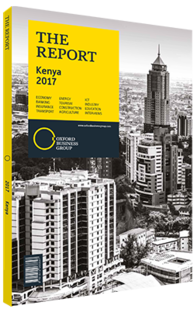Recent reforms address Kenya's land acquisition challenges
The land acquisition process in Kenya has been seen as an obstacle in the past, but is improving, following the April 2014 decision of the newly-established National Land Commission (NLC) to seek the Supreme Court’s opinion regarding its functions and responsibilities against those of the Ministry of Lands, Housing and Urban Development (MLHUD). The decision, which re-iterated MLHUD’s responsibility for title issuance, will help prevent future incidents of application backlogs, which exacerbate challenges like rising land prices, speculation and price inflation in 2013-14.
The NLC also maintains a significant role in land management, with the commission’s FY 2016/17 budget dominated by a major new project, an automated land registry database using geospatial information systems (GIS) to maintain modern plot records, which is expected to automate a host of processes across all land categories, including public and unregistered community land. This will in turn improve both the land acquisition process and investor sentiment, offering benefits to a host of sectors including agriculture.
Courts Clarification
In its December 2015 decision on the role of the NLC and MLHUD, a five-judge bench determined that “there is a clear separation of roles between the body providing oversight [the NLC] and the body upon which the oversight is to be conducted [the ministry]”. The bench stated that the two agency’s roles do not overlap, with the NLC responsible for acting as a regulator and ensuring the acquisition process is in legal compliance, while the MLHUD will continue to issue title deeds. The NLC, considered an independent institution, will also continue to be involved in preliminary phases of land allocation which includes surveying and registering.
Local media reported in January 2016 that the decision is critical in addressing a backlog of paperwork, reporting that between the fourth quarter of 2013 and the first quarter of 2014, the ministry had halted issuance of any new grants or titles as a result of disputes with the NLC, which negatively impacted a host of sectors – including agriculture.
Challenges
Although a court order in 2014 compelled the chief land registrar to resume duties, the situation remains a challenge for agriculture stakeholders. Foreign investment in large-scale agriculture is affected by a number of legal frameworks, including the 2010 constitution, which prohibits foreign land ownership and provides for a maximum 99-year lease, and rising land prices, with the Institute of Surveyors of Kenya reporting in July 2016 that land prices in areas slated for development – particularly in the infrastructure sector – are often significantly inflated. Squatters are also a problem for the sector, as was the case in November 2015, when local media reported that the NLC had ordered 2000 squatters in the Mau region to avoid spreading into a 607-ha parcel owned by the Agricultural Development Corporation.
Budget Priorities
Government spending on lands is set to focus on improving the land acquisition process. The National Land Commission’s budget increased to KSh1.63bn ($15.9m) in FY 2016/17, compared to KSh1.54bn ($15m) in FY 2015/16. The MLHUD saw its budget cut by KSh3.18bn ($31m) in FY 2016/17 to KSh28.9bn ($282.2m), or 1.78% of total spending. The International Budget Partnership reports that 20.8% of the NLC’s total budget will be allocated to a National Land Information Management System (NLIMS), which should significantly improve the acquisition process.
In a March 2016 policy paper, the NLC stated that NLIMS will use a GIS-based framework to handle and manage local parcel information, reporting that the project will be developed in phases, with system development, testing and a roll-out expected to be completed by 2020, although preliminary operations could begin as early as 2018. The commission reports that the new system will benefit the land acquisition process, automating functions like surveys for subdivisions, grants, establishing value and title registration.
You have reached the limit of premium articles you can view for free.
Choose from the options below to purchase print or digital editions of our Reports. You can also purchase a website subscription giving you unlimited access to all of our Reports online for 12 months.
If you have already purchased this Report or have a website subscription, please login to continue.

